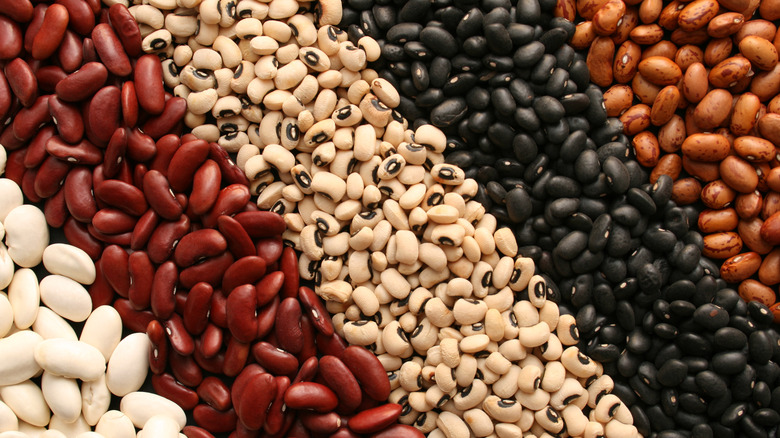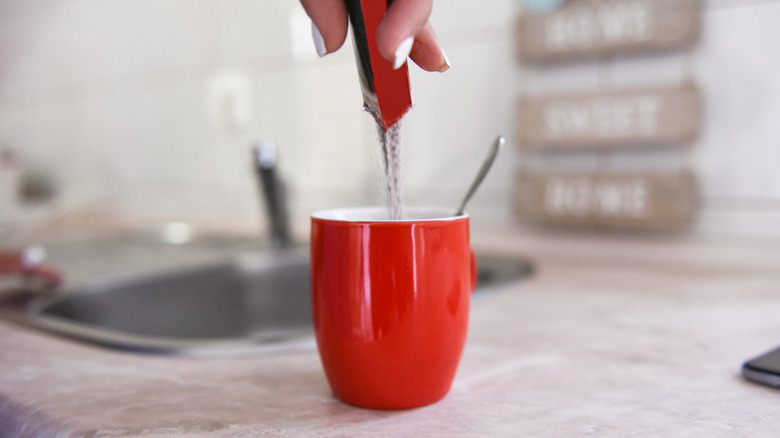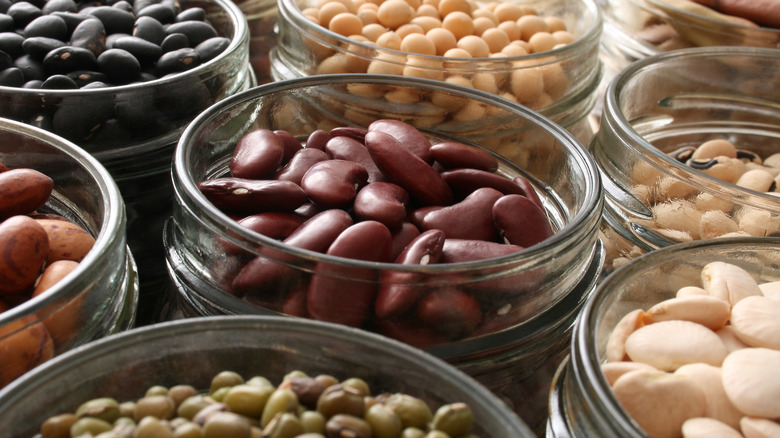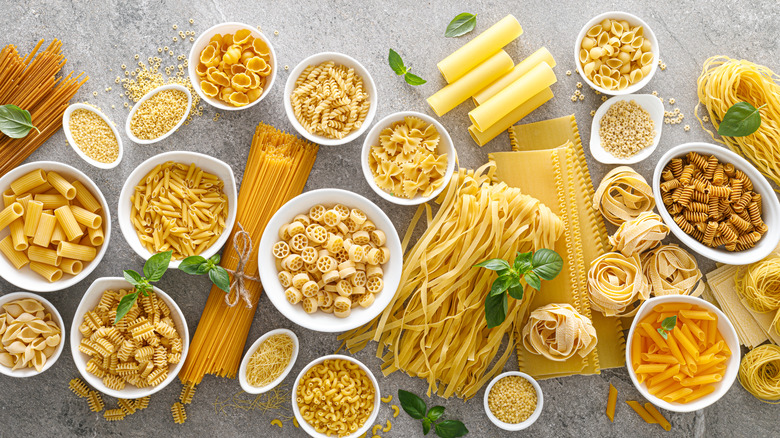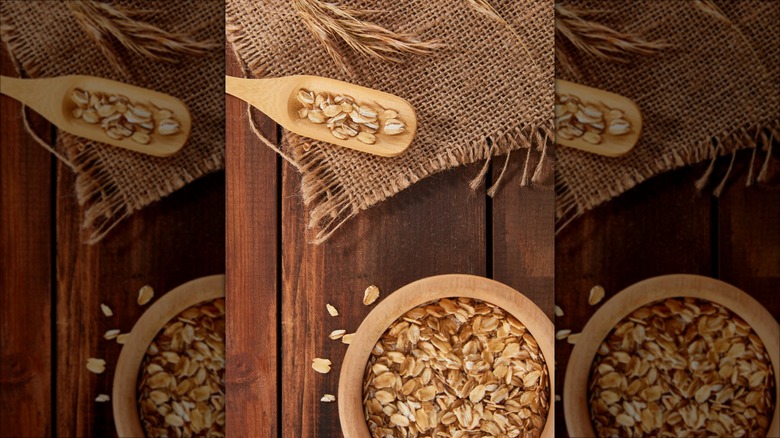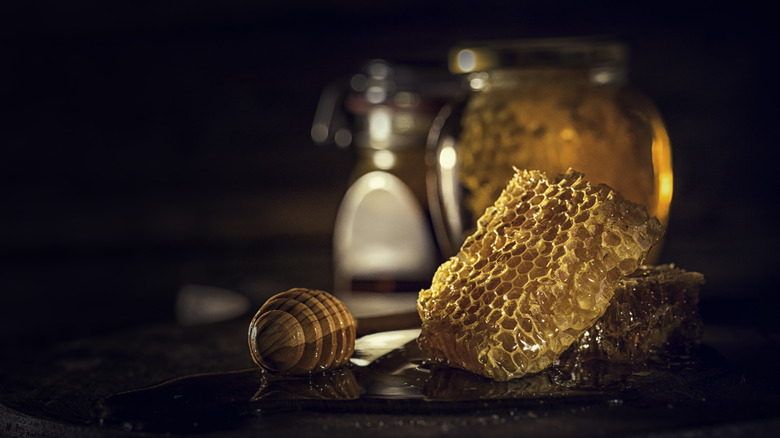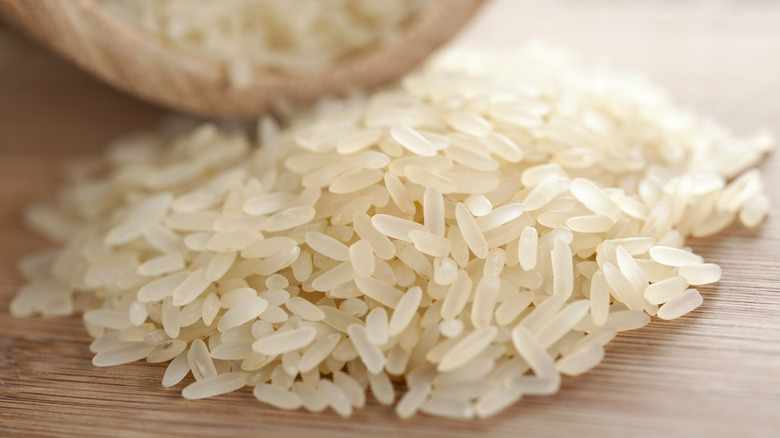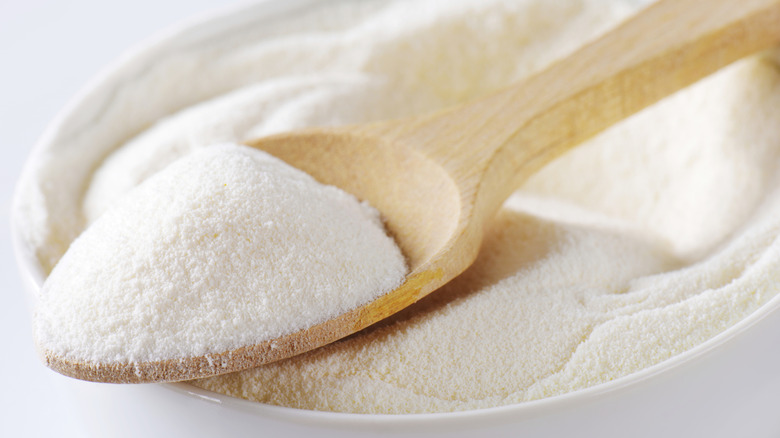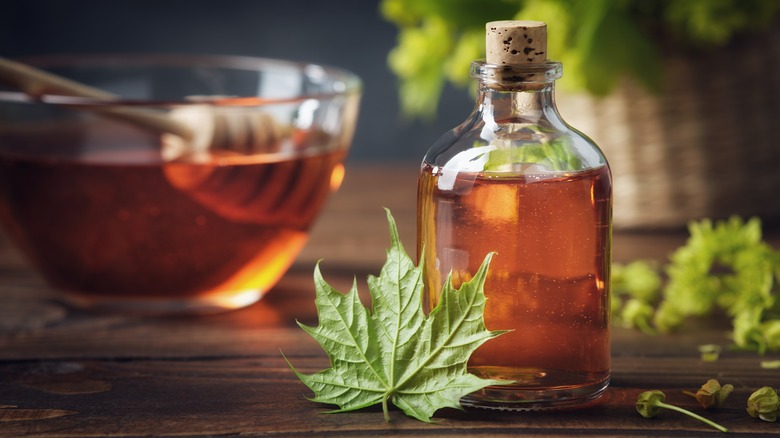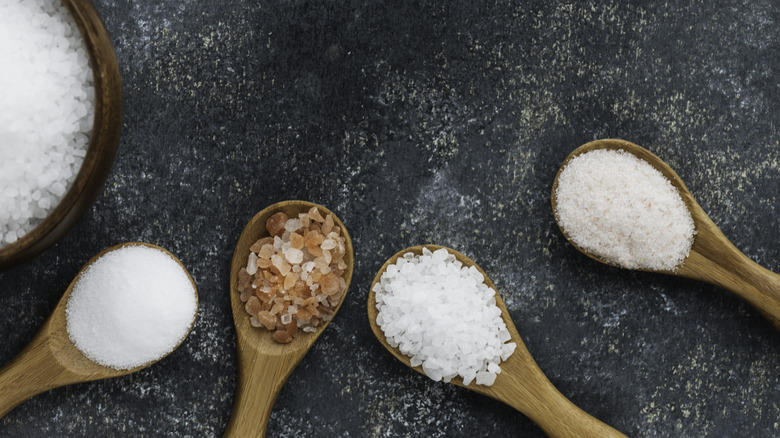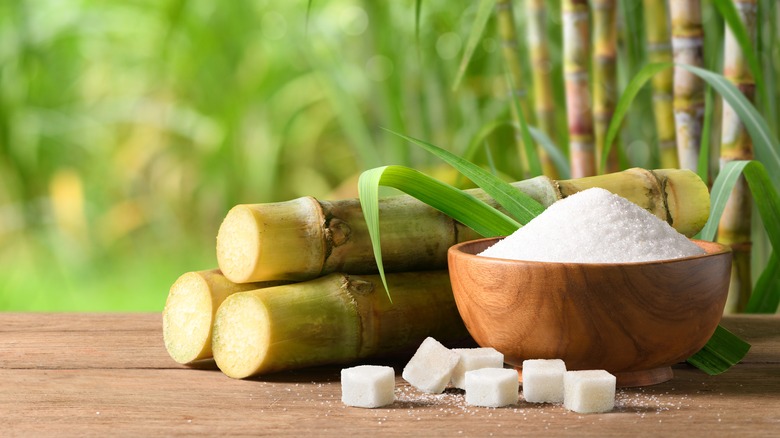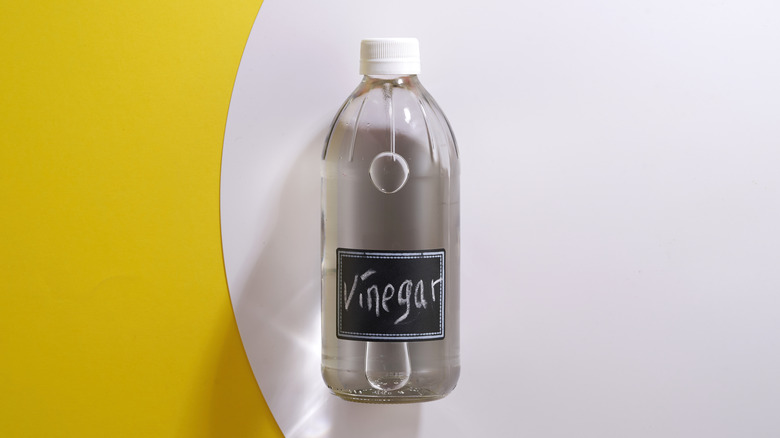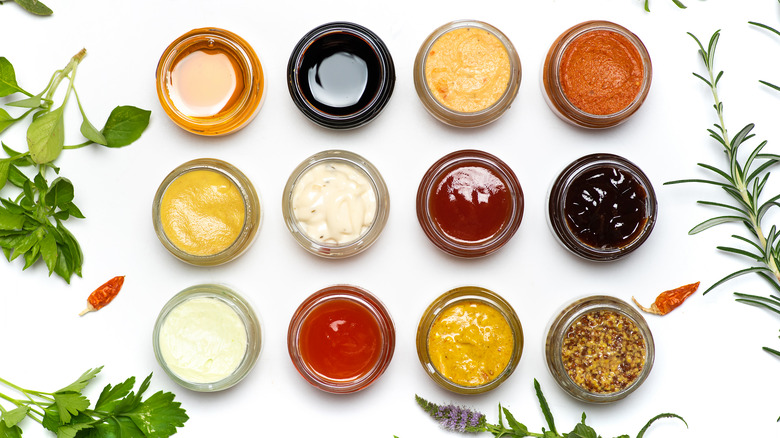Foods That Don't Actually Expire
Foods that don't expire are as valuable as the Holy Grail — but easier to find. Your quest for them usually takes you past the produce and frozen food aisle, more toward the back of the grocery store, where row upon row of canned goods give way to bags of flour, dried beans, and pasta. Modern thinking tells you that you should read the labels to determine when the food in question will expire.
But that's the thing: most of them do expire, eventually. But eventually is relative. A staple food item that lasts three years on the shelf expires more quickly than one that has been around since the time of the pharaohs. Yet, instinctively, we know that both types of non-perishable foods provide a bridge of nutritional stability that reaches over one financial challenge after another, allowing you to stick to your budget when economic downturns strike. And while these foods may not have the kind of je ne sais quoi that makes you want to photograph them for Instagram, it's awfully hard to live without 'em. If economics or just plain curiosity has you pondering which foods in the grocery store will get you through the next winter storm, you won't want to leave the pantry staples aisle in the grocery store without these foods.
1. Instant coffee
If you're going to face the apocalypse, then you'd better have plenty of coffee, and fortunately for you, instant coffee is one thing you can count on for about the first 20 years after the big event. All joking aside, this is the best-case scenario, of course, but word has it that instant coffee that's stashed in a cool, dry place and sealed tight as a drum can last anywhere from two years to two decades.
It's also worth mentioning that coffee, in general, has a pretty good shelf life. If you've ever looked at a bag of unground coffee beans, you'll notice a "best by" or "good until" date. That date is usually several months out from the current date. All told, this means that unground coffee beans last on the shelf, in the right conditions, for up to 30 months, give or take.
Finally, coffee doesn't go bad in the "it's rotten" sense. Rather, it begins to taste stale the older it gets. Light, moisture, and heat seem to be coffee's undoing, particularly if the coffee is in ground form. That's ground but not instant, just to clarify. In that case, it'll be okay for some weeks before you'll be able to taste your ground coffee's expiration date in your mouth.
2. Tea
Bags of tea make great care package contents for faraway friends. That's partly because few things refresh quite as well as a hot cuppa on a cold afternoon, and partly because tea lasts so long that it'll still be good even if the care package gets lost in the mail for a year. Given that most tea tastes fresh for at least two years in the right circumstances, said care package recipient still has another year to enjoy the Earl Grey before needing to toss it.
As far as shelf life goes, floral teas have the shortest shelf life at only three months. Black tea lasts the longest at two years. The tea doesn't have to be in tea bags, by the way. Loose-leaf teas also have a long shelf life, provided that they've been tucked away in a cool, dry, and dark place. Most teas don't go bad to the point where they taste rancid — nut teas are the exception here — but their flavor is no longer refreshing because the tea has gone stale.
For best results, invest in a container that's solely intended for tea storage if you think you won't drink all the tea up within a month or two. Repeated exposure to air makes them break down, so if you're saving your teas for special occasions, put them away in their own containers until you're ready to drink them.
3. Dried beans
Just because dried beans have held up in extreme cases for three decades or so doesn't mean that they'll taste good at the end of the 30 years, or that they'll have full nutritional value. It also doesn't mean you should pack a bunch of beans in Mylar and wait 30 years just to test it. As it turns out, everything in the preceding sentiments is true, giving you some idea of what a powerhouse this shelf-stable food group is. Time to unpack all of these dried beans truisms.
On average, dried beans that have not been exposed to moisture or pests last two to three years. At the five-year mark, most beans lose all nutritional value. That means, in theory, you can eat them, but they'll only fill your tummy. Nutritionally, they're a zero.
Proper storage plays a key role in how long the beans last. If they are sealed in mylar bags or air-tight cans void of oxygen, finding them just fine to eat at the 10-year mark isn't unheard of. As a Brigham Young University study revealed, dried beans that had sat cooling on a shelf for around 30 years still passed muster with 80% of a consumer taste group. The group gave the give dried beans — pintos, in this case — the thumbs up as a food that can stick it out admirably in long-term storage and still come out on top.
4. Dried pasta
People who budget shop in bulk for items, like dried pasta, do so because it allows them to "shop their pantries." Doing this means that instead of needing to take a last-minute trip to the grocery store to come up with something for dinner, they open their pantry doors, pull out some pasta, and whip up dinner.
Home gourmands love this option because, even if the pasta has been in its container for six months or so, they know that the pasta is good to go — though they may not know why, exactly. The why is simple: Most dried pastas have only about 12% moisture, making them shelf-stable for the long haul. Such low water content acts as a barrier against molds and bacteria that require more moisture to thrive.
Dried pasta lasts for up to three years if it's stored in a cool, dry place, though two years is the average. Egg noodles are the exception. Their egg content makes them more likely to go rancid than their non-egg counterparts. It's also worth noting that the area where you live makes a difference in terms of how shelf-stable your dried pasta remains. If you live in the rainforest around Forks, Washington, for example, a silica packet keeps your pasta safe from moisture, but otherwise, the regular precautions you take to keep your food safe should be just fine.
5. Dried oats
Oatmeal has been the stick-to-your-ribs breakfast that people have turned to for centuries when they needed something nutritious and hardy to get them through until lunch. And while steel-cut oats in the cupboard don't last quite that long, they do have the kind of staying power that makes them a pretty ideal long-term pantry item. They'll hang out in your pantry for around two years if you tuck them into an air-tight container and keep them out of sunlight and heat.
Commercial oats get steamed during processing which allows them to sit on the shelves for a while. Oats that don't get the steam bath only last around four months. Additionally, some varieties of oats get flavorful additions, such as dried fruit or milk. These add-ons add to or detract from the oats' shelf life, too.
If all of this seems too much to remember when you break out the oats that have sat like the elf on the shelf in your pantry, there's a pretty easy way to tell if you can still eat them past their "best by" dates, which indicates quality and not rancidity. If the oats smell bad, like they're moldy, then toss them. If they're not filled to the gills with moisture and otherwise seem to be in good shape, you can probably eat them.
6. Honey
King Tut's tomb boasted myriad priceless treasures, and while treasure hunters may say that the jewels and the gold were the most valuable, food nerds worth their salt would argue that the 3,000-year-old honey wins the most valuable treasure prize. The brave, or crazy, depending on how you look at it, archaeologists who found Tut's honey gave it a taste and, to their delight, discovered that it tasted just as good as the honey they probably ate on their biscuits during breakfasts in the weeks before the tomb's discovery.
While foods that have a 30-year shelf life may get people's respect, honey deserves their awe. It's one food that truly never goes bad, owing to its acidic pH and low water content. Over time, its color darkens, and it takes on a sugary texture, but it's still okay to eat.
But honey has more to offer than even shelf stability. It has healing as well as antibacterial properties that people have used as medicine for millennia. It comes pretty close to being ambrosia, food of the gods, which may be why Tut's tomb had stashes of honey right alongside all of those other treasures of note.
7. White rice
During the War of 1812, the USS Constitution set sail with rations that were to last the crew of nearly 500 men for months on the water. Among the rations were 1,316 gallons of rice, a testament to rice's almost indefinite shelf life, something that people in the pre-commercial refrigeration days relied on to keep them alive, especially when they were out to sea and no refilling stations were to be had.
People still rely on rice's long shelf life to create a pantry that lasts the tests of time and inflation. However, not all rice is created equal. Brown rice only lasts, at max, up to 18 months because it contains a lot of natural oils, which make it go bad faster. White rice, however, has the shelf life of Methuselah, and given that the great Patriarch lived just shy of a thousand years old, rice, with its indefinite shelf life, might still yet be the winner in this race.
What ruins rice's track record are the things that ruin the shelf lives of most shelf-stable foods: heat, moisture, and contaminants like dust or pests. It's also a food that goes bad quickly once you do cook it. It'll last only a couple of days in the fridge. If you freeze it, it'll be good to go for a couple of months, but even then, frozen white rice has nowhere near the shelf life that its dried counterpart does.
8. Powdered milk
For a commodity that stinks to high Heaven when it goes bad in the fridge, milk's non-liquid form, powdered milk, lasts an astonishingly long time. Most powdered milk manufacturers set powdered milk's "best by" date at around 18 months. However, powdered milk — particularly low-fat powdered milk — has been known to go the distance, lasting anywhere from two to 10 years. And in survivalist circles, there is said to be powdered milk that will still be drinkable a quarter of a century after it's made. All of this happens, of course, if the milk gets stashed on the shelf properly. That is, the cool, dry place that's out of direct light and is devoid of oxygen, the same as most other shelf-stable foods
However, just because you can drink some powdered milk after it's been sitting on the shelf for 25 years doesn't mean you should. The stability of the vitamins goes downhill after six months. Its taste goes out the window then, too.
9. Maple syrup
Pancakes with maple syrup taste like childhood on a fork, in large part due to memory's incredible ability to last as long as a jar of maple syrup does in the cellar. And maple syrup lasts a very, very long time, longer than the memory span of the average pancake eater. This is due to two traits that maple syrup shares with honey: a low-moisture and high-sugar makeup.
This gives it a shelf life that spans a near eternity, provided that it's treated with a little TLC before it's hidden away on a shelf. Keeping the jar sealed and unopened in a cool, dark place, like your cabinets or pantry shelves, is a good start. It should also not see the sunlight, or it'll start to deteriorate. It can develop mold on the top if it's not stored correctly. Some suggest wiping off the mold, making the syrup edible once again. If you're not brave enough to try this, it's probably best just to put the maple syrup in the freezer once it's open so that no mold has a chance to set up shop on the syrup.
10. Salt
Food preservative. One-time currency. Root word of "salary." In each of these instances, you see the hardiness and practicality of salt, a mineral and preservative that mankind has relied on since before recorded time. Its role as a food preservative gives you an inkling of the kind of shelf life that salt has. After all, anything that makes meat or vegetables last in storage, without refrigeration for sometimes years on end, must last a long time.
And indeed, it does. Plain salt without any additives, like iodine or other seasonings, has no expiration date. Salt, with the addition of anti-clumping agents, lives on shelves for about three to five years. Water or pests ruin salt, but then again, they ruin many pantry items aside from salt. Even pink Himalayan lasts nearly forever and a day, but given how often home chefs use salt in cooking, it's less likely to last for five years on a shelf, but not because it's gone bad.
11. Sugar
As far as a preservative goes, sugar is the sweet equivalent of salt — the sweet bread and butter pickle to the savory dill pickle, if you will. Like salt, sugar draws out the moisture — it's why you get so thirsty after eating all that Halloween candy — which, in turn, puts the kibosh on bacterial growth. No moisture equals no bacteria. And it doesn't just preserve pickles admirably. It's one of the reasons, besides just being downright delish, that chefs coat strawberries and other fruit with a layer of sugar. It impedes bacterial growth via the process of osmosis. That is, the water from inside the fruit gets pulled from its insides to its outsides and sugar is the agent that commences the pulling.
This is also why that container of sugar in your cupboard keeps going and going, just like the Energizer Bunny. While excess moisture makes it clump, it has no official expiration date, per se, particularly if it's sealed well against pests, moisture, and outside odors. If your food nerd mind wants a more exact number, two years is a good number to shoot for. Powdered sugar and brown sugar have the same kind of staying power, for the record.
12. White vinegar
If you want to know if vinegar goes bad, you may want to ask the ancients. Granted, you may not be able to ask them in person, but if you put on your Indiana Jones hat, you'd find traces of vinegar in old clay jars reaching back to cultures that went extinct millennia ago. Those civilizations didn't last, but their vinegar did, a testament to just how hardy this kitchen staple is.
Its acetic acid makes vinegar stable, and while some vinegar may lose its acidic edge over time, it won't go rancid. Vinegar comes about as a result of fermentation. Its fermentation gives it the kind of shelf life that allows it to last in ancient clay jars for centuries. Or in your pantry for years.
Like most store-bought products today, vinegar does come with a "best by" date. However, this isn't an indication of whether it's rancid. Rather, it denotes peak freshness and taste from the manufacturer's point of view. This date indicates that your trusty bottle of white vinegar is good to go for about two years.
13. Condiments
Your burger wouldn't survive quite as well without them, and fortunately for you, condiments can survive just about anything, making them one of the most shelf-able food groups around. From mustard to soy sauce, this is pretty much true across the board for most condiments.
The "why" behind this comes down to the ingredients that go into most condiments. If you were to look on the label, you'd find ingredients like vinegar, salt, and sugar. Or you'd read between the lines to see that fermentation was a part of the manufacturing process. Some condiments, like soy sauce or Worcestershire sauce, combine both shelf-stable ingredients and fermentation to make them doubly non-perishable.
Those with the longest expiration date include mustard, with a shelf life of three years, fish sauce, with a shelf life of four years, hot sauce, with a shelf life of five years, and Worcestershire sauce, with a shelf life of three years, though an "indefinite" label is often attached to its expiration date. It's also worth mentioning that most condiments, again, due to their ingredients, can remain on the pantry shelf after you open them for several months without any ill effects.
